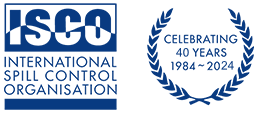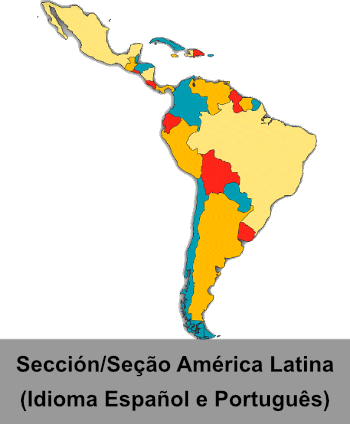This is part of a weekly column which provides the references and abstracts of new peer-reviewed scientific publications on oil spills.

Contributed by Dr Merv Fingas, this weekly column will provide the references and abstracts of new peer-reviewed scientific publications on oil spills. These references are selected on the basis of those papers that provide new insights into the fate, effects and control of oil spills.
Readers may choose to obtain the full publications and to do so, one of three methods is suggested; contact your library, search the internet with the DOI (digital object identifier) provided, or search the internet for the exact title. These are given in the order of likely success in obtaining the article. We hope that this provides useful information. Merv Fingas, ISCO colleague.
31. The role of predicted chemotactic and hydrocarbon degrading taxa in natural source zone depletion at a legacy petroleum hydrocarbon site, Murphy, C.W.M., Davis, G.B., Rayner, J.L., Walsh, T., Bastow, T.P., Butler, A.P., Puzon, G.J., Morgan, M.J. (2022) Journal of Hazardous Materials, 430, art. no. 128482,
DOI: 10.1016/j.jhazmat.2022.128482
ABSTRACT: Petroleum hydrocarbon contamination is a global problem which can cause long-term environmental damage and impacts water security. Natural source zone depletion (NSZD) is the natural degradation of such contaminants. Chemotaxis is an aspect of NSZD which is not fully understood, but one that grants microorganisms the ability to alter their motion in response to a chemical concentration gradient potentially enhancing petroleum NSZD mass removal rates. This study investigates the distribution of potentially chemotactic and hydrocarbon degrading microbes (CD) across the water table of a legacy petroleum hydrocarbon site near Perth, Western Australia in areas impacted by crude oil, diesel and jet fuel. Core samples were recovered and analysed for hydrocarbon contamination using gas chromatography. Predictive metagenomic profiling was undertaken to infer functionality using a combination of 16 S rRNA sequencing and PICRUSt2 analysis. Naphthalene contamination was found to significantly increase the occurrence of potential CD microbes, including members of the Comamonadaceae and Geobacteraceae families, which may enhance NSZD. Further work to explore and define this link is important for reliable estimation of biodegradation of petroleum hydrocarbon fuels. Furthermore, the outcomes suggest that the chemotactic parameter within existing NSZD models should be reviewed to accommodate CD accumulation in areas of naphthalene contamination, thereby providing a more accurate quantification of risk from petroleum impacts in subsurface environments, and the scale of risk mitigation due to NSZD.
32. Characteristics of the Archaeal Communities in Petroleum Hydrocarbon-Contaminated Groundwater, Li, R., Xiao, X., Zhao, Y., Tu, B., Zhu, X. (2022) Water, Air, and Soil Pollution, 233 (3), art. no. 69,
DOI: 10.1007/s11270-022-05544-6
ABSTRACT: Microorganisms play a major role in the natural attenuation of pollutants in groundwater, such as petroleum hydrocarbons. However, there are few studies on the structure and diversity of archaeal bacterial communities in extreme environments formed by petroleum hydrocarbon-contaminated groundwater. In this study, archaeal community composition of five petroleum hydrocarbon-contaminated groundwater wells located at an abandoned chemical factory representing low (0.00 ± 0.01 mg/L), mild (0.59 ± 0.02 mg/L), and high (2.05 ± 0.72 mg/L) concentration of total petroleum hydrocarbons (TPH) was investigated by sequencing microbial 16S rRNA gene amplicons. The results showed that Euryarchaeota and Thaumarchaeota were the main archaeal groups in TPH-contaminated groundwater, which composed 99% of the community abundance. TPH was found to be the dominant factor affecting the diversity and abundance of archaeal communities in high-contaminated wells. Total phosphorus, NO3−-N, and pH greatly influenced the archaeal communities in mild-contaminated wells, while low-contaminated wells were mainly influenced by temperature. Our results provided insights into the archaeal community composition of petroleum hydrocarbon-contaminated groundwater.
33. Metagenomic and Metatranscriptomic Responses of Chemical Dispersant Application during a Marine Dilbit Spill, Cao, Y., Zhang, B., Greer, C.W., Lee, K., Cai, Q., Song, X., Tremblay, J., Zhu, Z., Dong, G., Chen, B. (2022) Applied and Environmental Microbiology, 88 (5), art. no. e02151,
DOI: 10.1128/aem.02151-21
ABSTRACT: The global increase in marine transportation of dilbit (diluted bitumen) can increase the risk of spills, and the application of chemical dispersants remains a common response practice in spill events. To reliably evaluate dispersant effects on dilbit biodegradation over time, we set large-scale (1,500 mL) microcosms without nutrient addition using a low dilbit concentration (30 ppm). Shotgun metagenomics and metatranscriptomics were deployed to investigate microbial community responses to naturally and chemically dispersed dilbit. We found that the large-scale microcosms could produce more reproducible community trajectories than small-scale (250 mL) ones based on the 16S rRNA gene amplicon sequencing. In the early-stage large-scale microcosms, multiple genera were involved in the biodegradation of dilbit, while dispersant addition enriched primarily Alteromonas and competed for the utilization of dilbit, causing depressed degradation of aromatics. The metatranscriptomic-based metagenome-assembled genomes (MAG) further elucidated early-stage microbial antioxidation mechanism, which showed that dispersant addition triggered the increased expression of the antioxidation process genes of Alteromonas species. Differently, in the late stage, the microbial communities showed high diversity and richness and similar compositions and metabolic functions regardless of dispersant addition, indicating that the biotransformation of remaining compounds can occur within the post-oil communities. These findings can guide future microcosm studies and the application of chemical dispersants for responding to a marine dilbit spill. IMPORTANCE In this study, we employed microcosms to study the effects of marine dilbit spill and dispersant application on microbial community dynamics over time. We evaluated the impacts of microcosm scale and found that increasing the scale is beneficial for reducing community stochasticity, especially in the late stage of biodegradation. We observed that dispersant application suppressed aromatics biodegradation in the early stage (6 days), whereas exerting insignificant effects in the late stage (50 days), from both substance removal and metagenomic/metatranscriptomic perspectives. We further found that Alteromonas species are vital for the early-stage chemically dispersed oil biodegradation and clarified their degradation and antioxidation mechanisms. These findings help us to better understand microcosm studies and microbial roles for biodegrading dilbit and chemically dispersed dilbit and suggest that dispersant evaluation in large-scale systems and even through field trails would be more realistic after marine oil spill response.
34. Identification of key bacterial players during successful full-scale soil field bioremediation in Antarctica, Martinez Alvarez, L., Bolhuis, H., Mau, G.K., Kok-Gan, C., Sing, C.C., Mac Cormack, W., Ruberto, L. (2022) International Biodeterioration and Biodegradation, 168, art. no. 105354,
DOI: 10.1016/j.ibiod.2021.105354
ABSTRACT: The Antarctic continent is not exempted from anthropogenic contamination. Diesel spills on Antarctic soils occur frequently. There, extreme climate conditions and the scarce infrastructure, cause that few remediation strategies become feasible. Bioremediation has proven to be an effective approach for hydrocarbon-contaminated soils in Antarctica, allowing the removal of up to 80% of the contaminant by biostimulating soil microbial communities in biopiles. However, little is known on the changes that this treatment cause in the microbial communities, and how may this knowledge be used for future bioremediation schemes. In this work, we analyzed the changes in the bacterial community composition of biostimulated (BS) and control (CC) biopiles at Carlini Station (Arg.), Antarctica, from our previously reported “on-site” bioremediation scheme. The results showed that hydrocarbon biodegradation in Antarctic soils was accompanied by a significant change in bacterial community composition, with a progressive differentiation between the treated (BS) and non-treated (CC) systems as a function of time. Microbial diversity decreased in the BS system due to the enrichment in genera Pseudomonas, Rhodococcus, and Rhodanobacter, that seemed to follow an r/K (or copiotrophic/oligotrophic) strategist dynamic, in which Pseudomonas increased significantly at the early stages of the treatment (from initial 23.8% up to 33.2% at day 20, r strategist), while Rhodococcus and Rhodanobacter (K strategists) became dominant since day 20 and until the end of the experiment (from 5.4% to 2.4% at T = 0 days, up to 17.4% and 14.0% at the end of the experiment, respectively). In the control system, Sphingomonas (14.0% at T = 30 days), Pseudomonas (10.5% at T = 30 days), and Rhizorhapis (9.9% at T = 30 days) were the genera with higher relative abundance during the entire treatment period, with no short-term shifts in dominances and a more diverse and even bacterial community.
35. Association of Deepwater Horizon Oil Spill Response and Cleanup Work with Risk of Developing Hypertension, Kwok, R.K., Jackson, W.B., II, Curry, M.D., Stewart, P.A., Mcgrath, J.A., Stenzel, M., Huynh, T.B., Groth, C.P., Ramachandran, G., Banerjee, S., Pratt, G.C., Miller, A.K., Zhang, X., Engel, L.S., Sandler, D.P. (2022) JAMA Network Open, 5 (2), art. no. e220108,
DOI: 10.1001/jamanetworkopen.2022.0108
ABSTRACT: Importance: Exposure to hydrocarbons, fine particulate matter (PM2.5), and other chemicals from the April 20, 2010, Deepwater Horizon disaster may be associated with increased blood pressure and newly detected hypertension among oil spill response and cleanup workers. Objective: To determine whether participation in cleanup activities following the disaster was associated with increased risk of developing hypertension. Design, Setting, and Participants: This cohort study was conducted via telephone interviews and in-person home exams. Participants were 6846 adults who had worked on the oil spill cleanup (workers) and 1505 others who had completed required safety training but did not do cleanup work (nonworkers). Eligible participants did not have diagnosed hypertension at the time of the oil spill. Statistical analyses were performed from June 2018 to December 2021. Exposures: Engagement in cleanup activities following the Deepwater Horizon oil spill disaster, job classes, quintiles of cumulative total hydrocarbons exposure level, potential exposure to burning or flaring oil, and estimated PM2.5were examined. Main Outcomes and Measures: Systolic and diastolic blood pressure measurements were collected during home exams from 2011 to 2013 using automated oscillometric monitors. Newly detected hypertension was defined as antihypertensive medication use or elevated blood pressure since the spill. Log binomial regression was used to calculate prevalence ratios (PR) and 95% CIs for associations between cleanup exposures and hypertension. Multivariable linear regression was used to estimate exposure effects on continuous blood pressure levels. Results: Of 8351 participants included in this study, 6484 (77.6%) were male, 517 (6.2%) were Hispanic, 2859 (34.2%) were non-Hispanic Black, and 4418 (52.9%) were non-Hispanic White; the mean (SD) age was 41.9 (12.5) years at enrollment. Among workers, the prevalence of newly detected hypertension was elevated in all quintiles (Q) of cumulative total hydrocarbons above the first quintile (PR for Q3, 1.29 [95% CI, 1.13-1.46], PR for Q4, 1.25 [95% CI, 1.10-1.43], and PR for Q5, 1.31 [95% CI, 1.15-1.50]). Both exposure to burning and/or flaring oil and gas (PR, 1.16 [95% CI, 1.02-1.33]) and PM2.5from burning (PR, 1.26 [95% CI, 0.89-1.71]) for the highest exposure category were associated with increased risk of newly detected hypertension, as were several types of oil spill work including cleanup on water (PR, 1.34 [95% CI, 1.08-1.66]) and response work (PR, 1.51 [95% CI, 1.20-1.90]). Conclusions and Relevance: Oil spill exposures were associated with newly detected hypertension after the Deepwater Horizon disaster. These findings suggest that blood pressure screening should be considered for workers with occupational hydrocarbon exposures.
36. The developing zebrafish kidney is impaired by Deepwater Horizon crude oil early-life stage exposure: A molecular to whole-organism perspective, Bonatesta, F., Emadi, C., Price, E.R., Wang, Y., Greer, J.B., Xu, E.G., Schlenk, D., Grosell, M., Mager, E.M. (2022) Science of the Total Environment, 808, art. no. 151988,
DOI: 10.1016/j.scitotenv.2021.151988
ABSTRACT: Crude oil is known to induce developmental defects in teleost fish exposed during early life stages (ELSs). While most studies in recent years have focused on cardiac endpoints, evidence from whole-animal transcriptomic analyses and studies with individual polycyclic aromatic hydrocarbons (PAHs) indicate that the developing kidney (i.e., pronephros) is also at risk. Considering the role of the pronephros in osmoregulation, and the common observance of edema in oil-exposed ELS fish, surprisingly little is known regarding the effects of oil exposure on pronephros development and function. Using zebrafish (Danio rerio) ELSs, we assessed the transcriptional and morphological responses to two dilutions of high-energy water accommodated fractions (HEWAF) of oil from the Deepwater Horizon oil spill using a combination of qPCR and whole-mount in situ hybridization (WM-ISH) of candidate genes involved in pronephros development and function, and immunohistochemistry (WM-IHC). To assess potential functional impacts on the pronephros, three 24 h osmotic challenges (2 hypo-osmotic, 1 near iso‐osmotic) were implemented at two developmental time points (48 and 96 h post fertilization; hpf) following exposure to HEWAF. Changes in transcript expression level and location specific to different regions of the pronephros were observed by qPCR and WM-ISH. Further, pronephros morphology was altered in crude oil exposed larvae, characterized by failed glomerulus and neck segment formation, and straightening of the pronephric tubules. The osmotic challenges at 96 hpf greatly exacerbated edema in both HEWAF-exposed groups regardless of osmolarity. By contrast, larvae at 48 hpf exhibited no edema prior to the osmotic challenge, but previous HEWAF exposure elicited a concentration-response increase in edema at hypo-osmotic conditions that appeared to have been largely alleviated under near iso‐osmotic conditions. In summary, ELS HEWAF exposure impaired proper pronephros development in zebrafish, which coupled with cardiotoxic effects, most likely reduced or inhibited pronephros fluid clearance capacity and increased edema formation.





